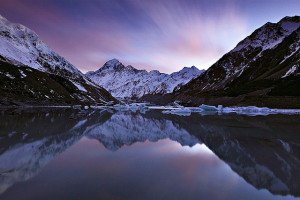New Zealand is a leader in earth and environmental sciences in the Asia Pacific region, according to an analysis of high level research publications.

The Nature Index analyses countries’ and institutions’ contributions to research published in 68 top tier journals. The Index‘s overview of the last year’s data singles out New Zealand as “a leader in earth and environmental sciences”.
The analysis is published as the Nature Index 2015 Asia Pacific Supplement.
According to the supplement, New Zealand focuses more of its research on earth and environmental science than any other country in the region, with over 30 per cent of our Nature Index contributions falling into this category.
Countries and institutions in the index are assessed on how many articles they published in top journals, and also in a more detailed measure, the Weighted Fractional Count (WFC), which takes into account individual authors’ contributions to articles and the over-representation of some fields of science.
You can see New Zealand’s top institutions, ranked by these measures, in the graphic below.

Rankings
In terms of WFC, New Zealand institutions ranked in a number of Asia Pacific-wide categories:
- As overall contributors to Nature Index journals, University of Otago was ranked 91st, the University of Auckland was ranked 110th and Victoria University Wellington was ranked 177th.
- In the Life Sciences, University of Otago was ranked 46th
- In Earth and Environment Sciences, GNS Science was ranked 28th, the University of Otago 38th and the University of Auckland 44th.
- When only contributions to leading journals Nature and Science were considered, two New Zealand institutions ranked in the top 50: NIWA at 37th and Massey University at 44th.
The SMC collected the following expert commentary:
Prof Shaun Hendy, Director of Te Punaha Matatini, a New Zealand Centre of Research Excellence, and a Professor of Physics at the University of Auckland, comments:
“The Nature Index provides a window into what New Zealand’s scientists are working on, how much new knowledge they are creating, and who they are working with. To understand New Zealand’s position in this year’s report you just need to follow the money. We produce fewer scientific papers per capita than the rest of the region because we invest less on science. A much greater proportion of our science concerns the life sciences and the environment than that of other Asia-Pacific economies, because we continue to prioritise primary sector research while our neighbours move into high technology. We tend to collaborate much more with Europe than might be expected, because we are not doing science that our neighbours are interested in. Despite facing the same cultural and language barriers as New Zealand scientists, Australian researchers collaborate much more extensively with their counterparts in China.”
Dr Nicola Gaston, President of the New Zealand Association of Scientists and Principal Investigator, The MacDiarmid Institute for Advanced Materials and Nanotechnology, comments:
“The Nature Index supplement on the Asia Pacific region gives some interesting insight into both the things that we have in common with our geographic neighbours in the domain of scientific research, and the ways in which we differentiate ourselves. Some of the differences are straightforward: for example, our expertise in earth and environmental sciences is a rational consequence of geography. If we do not develop the expertise to study our own landforms and ecosystems, who will? And with a small population relative to the size and uniqueness of our country, it is only natural that we stand out in this area.
“On the other hand, we underperform relative to the rest of the Asia Pacific in terms of our rate of publication in the Nature Index journals. Our best performing University on this measure is the University of Otago, followed by the University of Auckland and Victoria University of Wellington. Otago is clearly boosted by research in the life sciences, but also by work in earth and environmental sciences, as judged by their appearance in the top 50 in those tables. GNS is our only CRI to make an appearance in the top-50 tables for publication in specific disciplines, which it does in earth and environmental sciences, at number 28 (compared to Otago at 38 and Auckland at 44). On the other hand, the only institutions which appear in the top 50 for publication in Nature and Science are Massey University (at 44th) and NIWA (at 37th). While the reasons for our overall underperformance need further analysis, one hypothesis based on the performance of particular institutions in those tables would be that the push towards increased commercial impact of research in New Zealand, and the requirement for research proposals to have direct co-investment by the private sector to be eligible for the majority of government grants, disincentivises the types of long-term, world-leading research that enables publication in these world-leading journals.
“To say that another way: perhaps it is no coincidence that it is in the physical and chemical sciences, where commercialisation of research is a key requirement for funding through MBIE, that we underperform against other countries in the Asia Pacific. However, the focus of NZ research on the agricultural sector is also pertinent: our (many) CRIs that are focussed on the primary sector do not make an appearance in the Nature Index.
“A final comment to be made is on the lack of collaboration between countries in the Asia Pacific region. Certainly this is to a large degree this is cultural, and indicative of language barriers; it is, however, interesting to reflect on the disparity in research disciplines (for example, as China, Japan, and India are strongly focused on research in the chemical and physical sciences) and the impact that this must also have on opportunities for collaboration.”